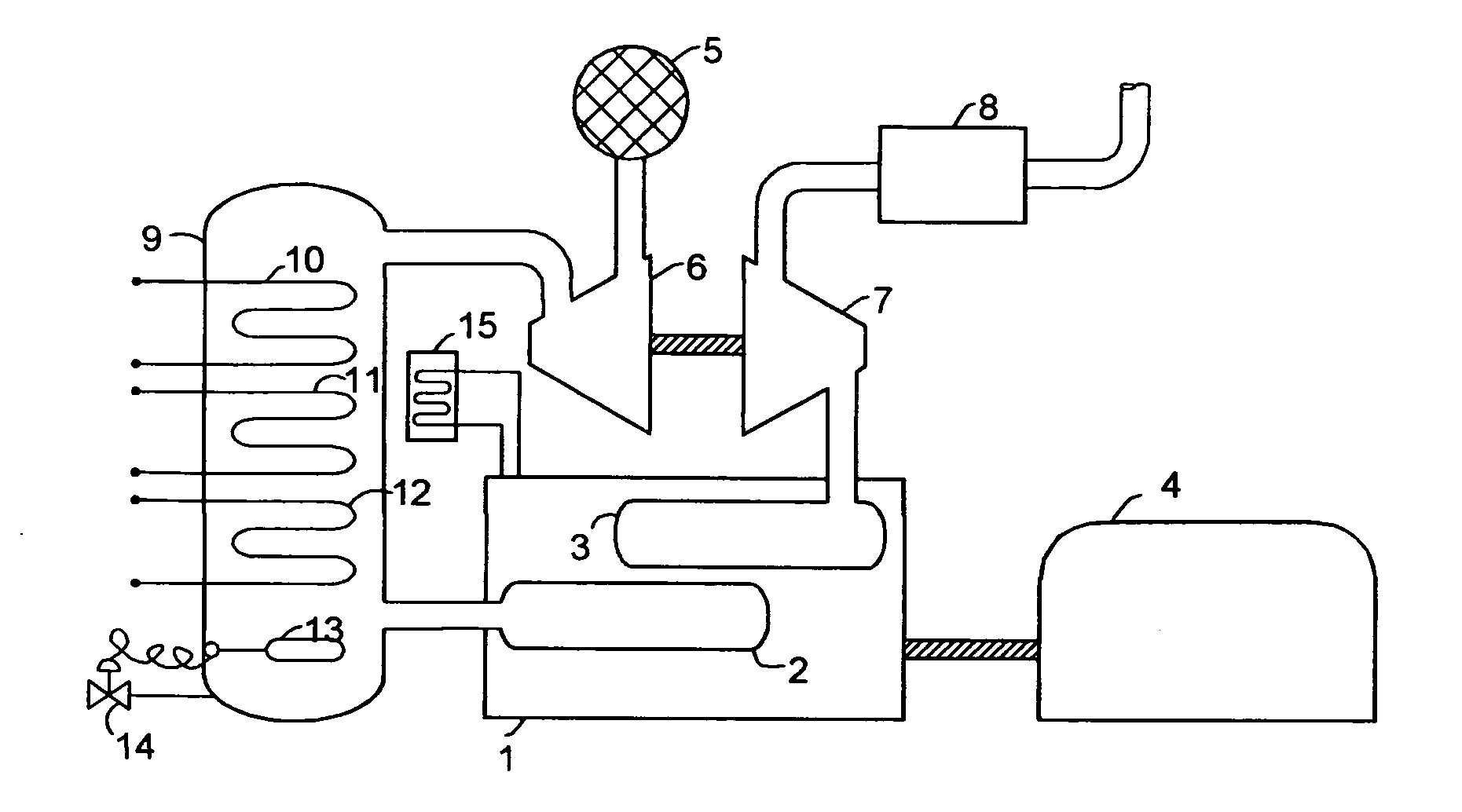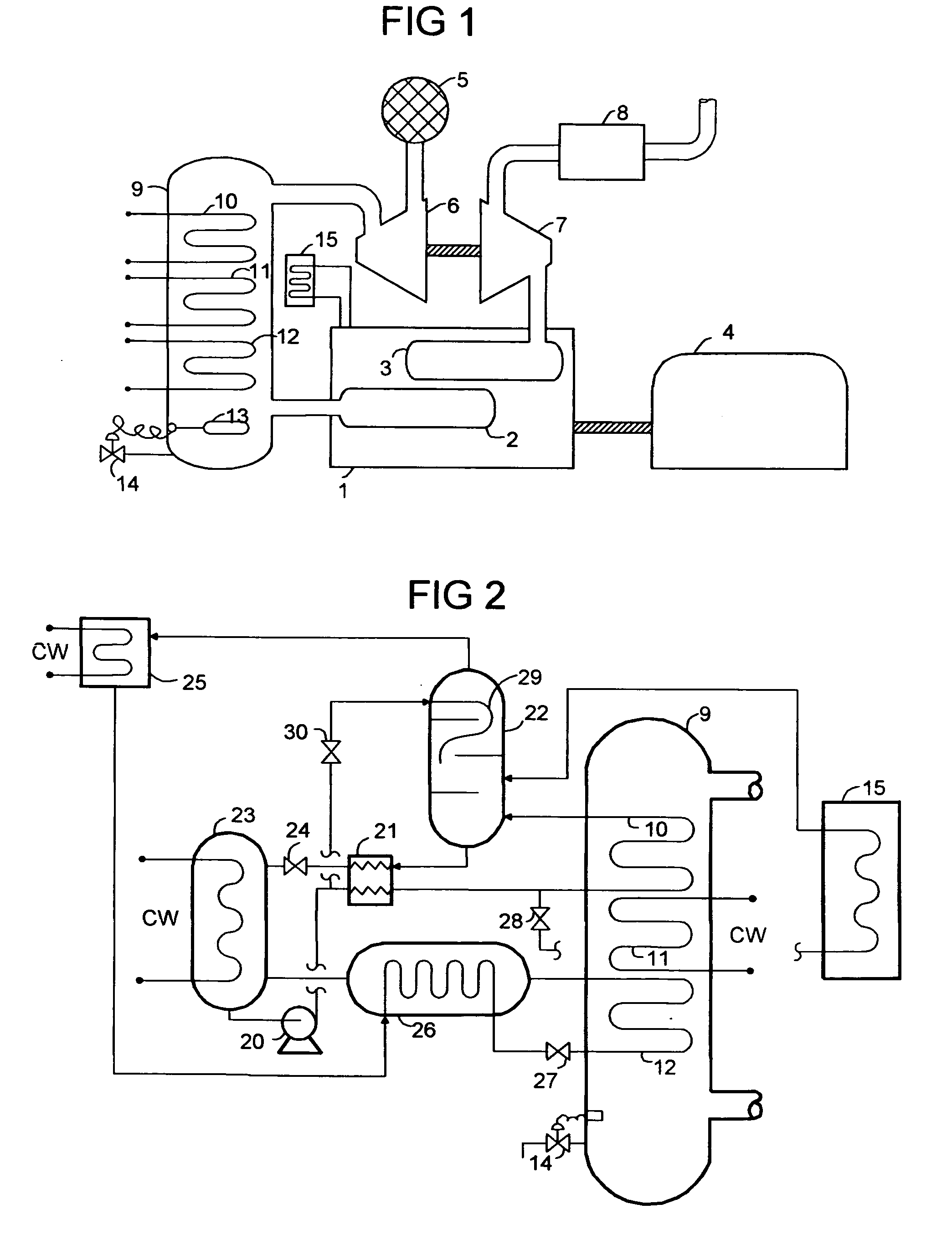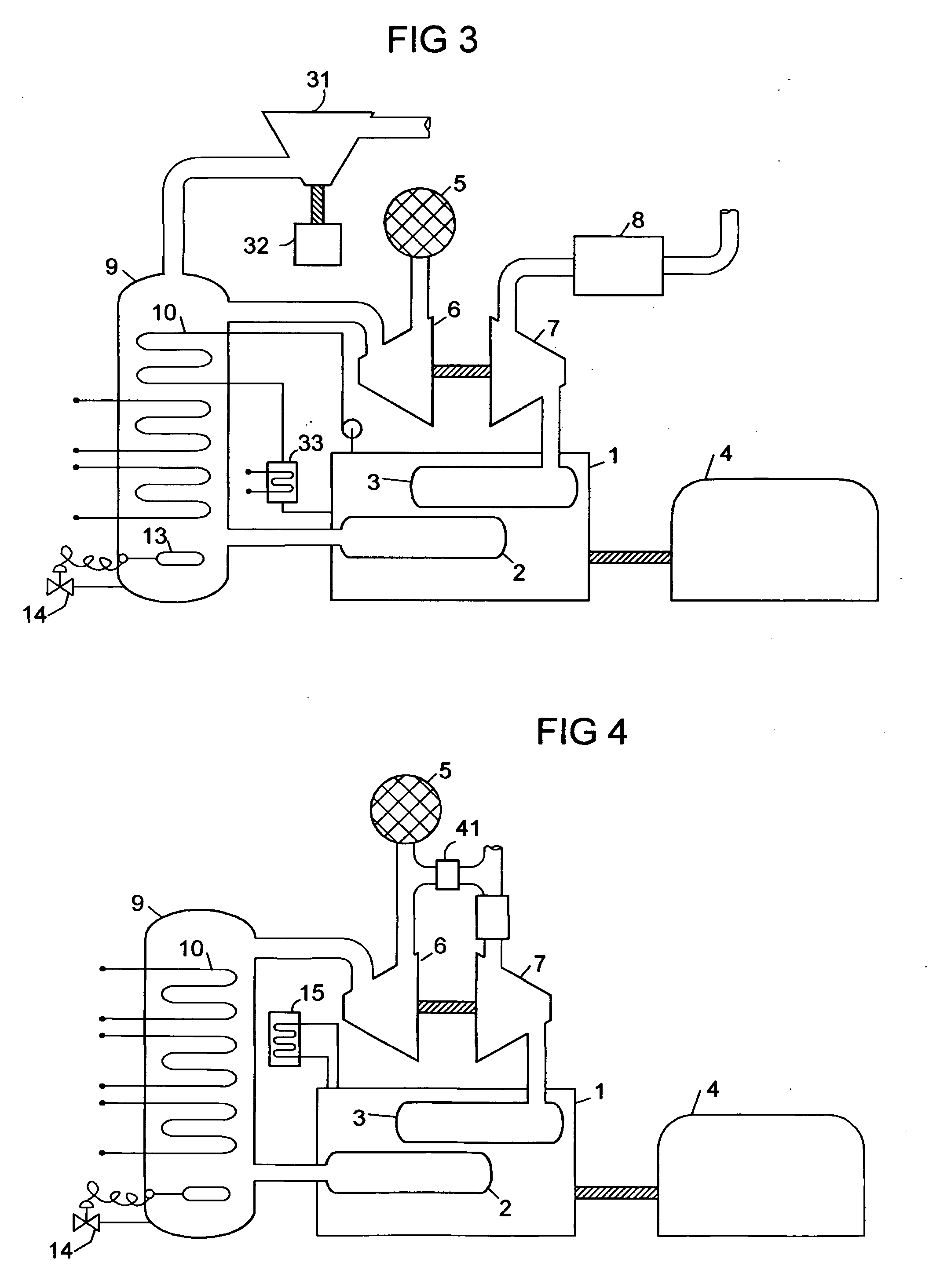Charge air chiller
a technology of air chiller and air compressor, which is applied in the direction of machines/engines, machine operation modes, lighting and heating apparatus, etc., can solve the problems of limiting the charge density, increasing the compression work, and consuming a significant portion of the power/efficiency gain from lower temperature compression in the production of refrigeration, so as to achieve the effect of increasing the boost pressure and/or compression ratio, increasing the energy efficiency, and increasing the efficiency
- Summary
- Abstract
- Description
- Claims
- Application Information
AI Technical Summary
Benefits of technology
Problems solved by technology
Method used
Image
Examples
example 1
[0026]A spark-ignited natural gas fueled engine originally has 45° C. charge air, 3.6 bar boost pressure, and compression ratio of 12. The disclosed charge air chiller system is added, providing 10° C. charge air, compression ratio is increased to 15, and boost pressure is decreased to 3.2 bars absolute. Engine efficiency increases by about 6% at full load ISO conditions, and more at warmer ambients.
example 2
[0027]A compression-ignited liquid fueled engine originally has 50° C. charge air, 3.6 bar boost pressure, and compression ratio of 16. After retrofitting a charge air chiller system which provides 15° C. charge air, the compression ratio is increased to 17, and the boost pressure is increased to 3.8 bars absolute.
[0028]Referring to FIG. 1, internal combustion engine 1 is comprised of inlet manifold 2, exhaust manifold 3, and the powered apparatus 4, which can variously be an electrical generator, a gas compressor, a transmission, a propeller, or other power-absorbing means. Inlet air from filter 5 is supplied to charge compressor 6, which is powered for example by exhaust powered turbine 7. Exhaust treatment apparatus 8 accomplishes any required modifications of the exhaust stream, such as emissions reduction, heat recovery, and silencing. The charge air is supplied to an intercooler system comprised of pressure containment 9 plus three heat exchange segments which are arranged seq...
PUM
 Login to View More
Login to View More Abstract
Description
Claims
Application Information
 Login to View More
Login to View More - R&D
- Intellectual Property
- Life Sciences
- Materials
- Tech Scout
- Unparalleled Data Quality
- Higher Quality Content
- 60% Fewer Hallucinations
Browse by: Latest US Patents, China's latest patents, Technical Efficacy Thesaurus, Application Domain, Technology Topic, Popular Technical Reports.
© 2025 PatSnap. All rights reserved.Legal|Privacy policy|Modern Slavery Act Transparency Statement|Sitemap|About US| Contact US: help@patsnap.com



